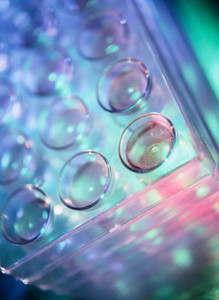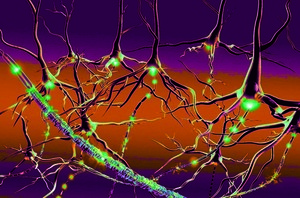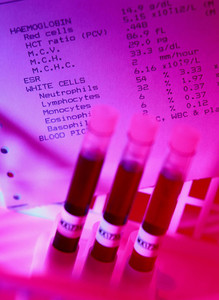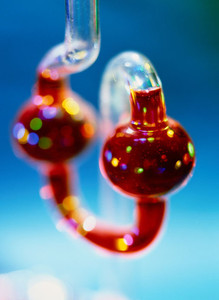Authors from the US Food and Drug Administration (FDA) have published details of an evaluation of the in vitro efficacy of sevelamer hydrochloride and sevelamer carbonate [1]. The results from this analysis, say the authors, ‘will be useful in assisting with “in vivo” biowaiver for the approval of generic sevelamer drug products’.
In vitro analysis of follow-on versions of sevelamer
Non‐Biological Complex Drugs/Research
|
Posted 18/11/2016
 0
Post your comment
0
Post your comment

Sevelamer hydrochloride is a cationic, polymeric ion exchange resin derived from poly(allylamine hydrochloride) crosslinked with epichlorohydrin in which 40% of the amines are protonated. The originator products Renagel (sevelamer hydrochloride) and Renvela (sevelamer carbonate) are both indicated for the control of serum phosphorus in patients with chronic kidney disease on dialysis. The amine groups of sevelamer become partially protonated in the intestine and interact with phosphate ions through ionic and hydrogen bonding. When taken with meals, it binds to dietary phosphate and prevents its absorption.
Sevelamer is classified as non-biological complex drug (NBCD), but since there are currently no overarching guidelines for follow-on versions of NBCDs such drugs are approved under the generics pathway. However, due to their complexity and the fact that they cannot be fully quantitated, characterized or described by (physico)chemical analytical tools, some groups have said that the generics pathways may not be appropriate and have called for regulatory guidelines for follow-on versions of NBCDs [2]. The European Medicines Agency (EMA) has responded to such concerns by publishing reflection papers for NBCDs in the form of follow-on versions of iron-based nano-colloidal products and intravenous liposomal products [3].
The authors developed and validated what they term a ‘simple and efficient inductively coupled plasma spectrometer method for analysis of phosphate at physiologically relevant pH conditions’. The developed method met FDA requirements for analytical validation characteristics, such as linearity, accuracy, precision, stability and selectivity. The study was carried out as part of an overall effort by the agency to develop effective in vitro surrogate approaches when traditional bioequivalence studies are not possible.
The in vitro phosphate binding efficacies were systematically evaluated and compared for two drug products (Renagel and Renvela) and two active pharmaceutical ingredients (APIs) in a kinetic binding study and an equilibrium binding study mimicking human physiological conditions. The results supported the generally held hypothesis that changes in pH affect the ratio of phosphate species and the extent of protonation of the sevelamer amine groups. This in turn affected the phosphate binding in terms of binding affinity/kinetics and, to a lesser degree, binding capacity. The phosphate level had a significant impact on the phosphate binding capacity for both drug products and APIs under all pH conditions, with more binding at higher phosphate concentration.
The phosphate binding profiles appeared similar between the drug products and, under all conditions, the sevelamer phosphate binding reached equilibrium at 6 h. The 90% confidence interval for the k2 ratio (sevelamer hydrochloride versus sevelamer carbonate) was well within 80−125% under all pH conditions. However, the k1 ratio varied, indicating that there exists difference in the binding affinity.
In its guidance, FDA recommends that two in vivo studies be carried out in order to demonstrate bioequivalence for sevelamer and it does not recommend waiver requests of in vitro equilibrium and kinetic binding studies [4]. However, the authors believe that the results of this study ‘may serve as an example for the implementation of agency’s guidances on sevelamer drug products’ and that ‘the scientific findings can also be used to assist with “in vivo” biowaiver for the approval of ANDA sevelamer drug products’. A biowaiver can be applied only for products which meet requirements on pharmaceutical similarity, as well as similarity in comparative dissolution tests.
Related articles
Rigorous approach used to approve a follow-on version of glatiramer acetate
Impax settles patent dispute with Genzyme
References
1. Yang Y, Mohammad A, Berendt RT, Carlin A, Khan MA, Faustino PJ. Evaluation of the in vitro efficacy of sevelamer hydrochloride and sevelamer carbonate. J Pharm Sci. 2016;105(2):864-75.
2. GaBI Online - Generics and Biosimilars Initiative. Guidelines needed for follow-on versions of NBCDs [www.gabionline.net]. Mol, Belgium: Pro Pharma Communications International; [cited 2016 Sep 15]. Available from: www.gabionline.net/Reports/Guidelines-needed-for-follow-on-versions-of-NBCDs
3. GaBI Online - Generics and Biosimilars Initiative. EU guidelines for follow-on NBCDs [www.gabionline.net]. Mol, Belgium: Pro Pharma Communications International; [cited 2016 Sep 15]. Available from: www.gabionline.net/Non-Biological-Complex-Drugs/Guidelines/EU-guidelines-for-follow-on-NBCDs
4. GaBI Online - Generics and Biosimilars Initiative. FDA releases 53 new and revised bioequivalence guidelines for generics [www.gabionline.net]. Mol, Belgium: Pro Pharma Communications International; [cited 2016 Sep 15]. Available from: www.gabionline.net/Guidelines/FDA-releases-53-new-and-revised-bioequivalence-guidelines-for-generics
Permission granted to reproduce for personal and non-commercial use only. All other reproduction, copy or reprinting of all or part of any ‘Content’ found on this website is strictly prohibited without the prior consent of the publisher. Contact the publisher to obtain permission before redistributing.
Copyright – Unless otherwise stated all contents of this website are © 2016 Pro Pharma Communications International. All Rights Reserved.
Biosimilars and follow-on NBCDs for MS in Europe, the US and Canada

Non‐Biological Complex Drugs/Research Posted 19/01/2018
Scientific and regulatory considerations for follow-on versions of complex drug products containing nanomaterials

Non‐Biological Complex Drugs/Research Posted 04/05/2017
Follow-up studies needed to ensure safety for follow-on NBCDs

Non‐Biological Complex Drugs/Research Posted 31/03/2017
The best selling biotechnology drugs of 2008: the next biosimilars targets







Post your comment